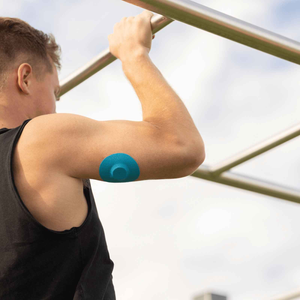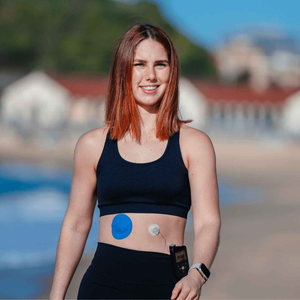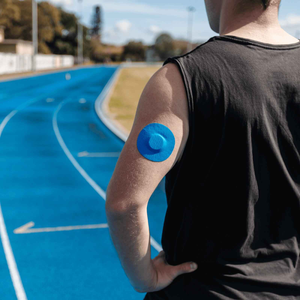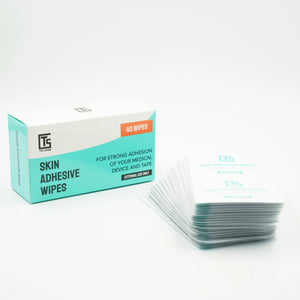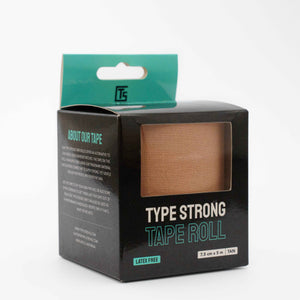Let’s clear something up straight away – CGM patches are not sterile. That might surprise you, especially when you consider how closely they sit against your skin for days on end. But don’t worry – there’s more to the story.
If you’ve ever thought about reusing an old patch, or even just touching the adhesive before applying it, this is the blog for you. We’re diving into what sterile really means, how hygiene plays a role in patch safety, and what to know before reapplying any CGM adhesive.
First, what does ‘sterile’ actually mean?
In medical terms, “sterile” means free from all living microorganisms. That includes bacteria, viruses, and fungi. Hospitals use sterile dressings during surgeries because even tiny contaminants can cause serious infections.
CGM patches, on the other hand, are clean – but not sterile. They’re manufactured in hygienic environments, but not sealed or treated to guarantee zero microbes. Given they’re external accessories (like athletic tape), they aren’t held to the same standard.
So, are CGM patches safe?
Absolutely – when used correctly.
Here’s what makes them safe for regular wear:
- Skin-safe materials – Let skin breathe, reduce irritation.
- Adhesive designed for wear-time – Typically lasts 7–10 days, depending on your activity and exposure.
- Proper prep and removal – Skin must be clean and dry before application.
The key is single-use. Once a patch adheres to your skin, reusing it greatly increases the risk of irritation or infection—even if it looks fine.
If you're noticing skin irritation even with fresh patches, it’s worth exploring our guide on how to tell if your CGM patch is causing a reaction.
What if you do need to re-secure a patch?
Alright, we’ve all had those moments...
Here’s how to handle a lifting edge without risking skin issues:
- Never re-stick a fully removed patch. Bacteria and oils compromise the adhesive.
- Use a cut-to-fit tape roll, like Type Strong’s Tape Roll, to secure edges. It’s built with medical-grade adhesive and lets you customise the fix.
-
Clean the area briefly with alcohol before applying the tape.
Think of patches as bandages—once they’ve lifted or been exposed, they’re no longer hygienic.
Wondering if patch adhesives really hold up through sweat and water? Our breakdown on waterproof and sweatproof patch claims sheds light on what actually works.

Can you sanitise a patch yourself?
Sounds practical, right? But short answer is: No.
Alcohol can:
- Degrade the adhesive.
- Trap moisture or irritants on the skin.
- Don’t address microbes throughout the patch material.
It’s basically like trying to sanitise a used tissue—it won’t get truly clean again.
Warning signs of infection
Skin irritation is common—but infections are rare but serious. Watch for:
- Redness that worsens after removal
- Pus, oozing, warmth at the site
- Spreading rash or itch
- Swelling or pain around the sensor
If any of these show up, contact your GP or diabetes team. For medical background, check out Mayo Clinic’s advice on skin infections and symptoms.
Universal hygiene tips for CGM patch users
No matter which device you use—Dexcom, Libre, Omnipod, Medtronic—the hygiene rules are the same:
- Wash your hands before handling anything.
- Prep skin with alcohol and let it dry fully.
- Rotate sites for skin health.
- Use barrier wipes if your skin’s sensitive (ask your clinician).
- Skip old patches, even for fast fixes.
And if you’re after a visual on placement, our complete step‑by‑step Freestyle Libre application guide walks you through the whole process.
Final thoughts
So, can CGM patches be sterile? Nope—but they’re meant to be clean and single-use. Trying to reuse or re-stick lifted patches isn’t worth the skin trouble.
Play it safe. Keep a Tape Roll handy, prep your site properly, and apply fresh patches every time. Your skin—and your CGM—will fare much better.
https://typestrongworkspace.slack.com/archives/D08L34XJDRR/p1746846121593049
